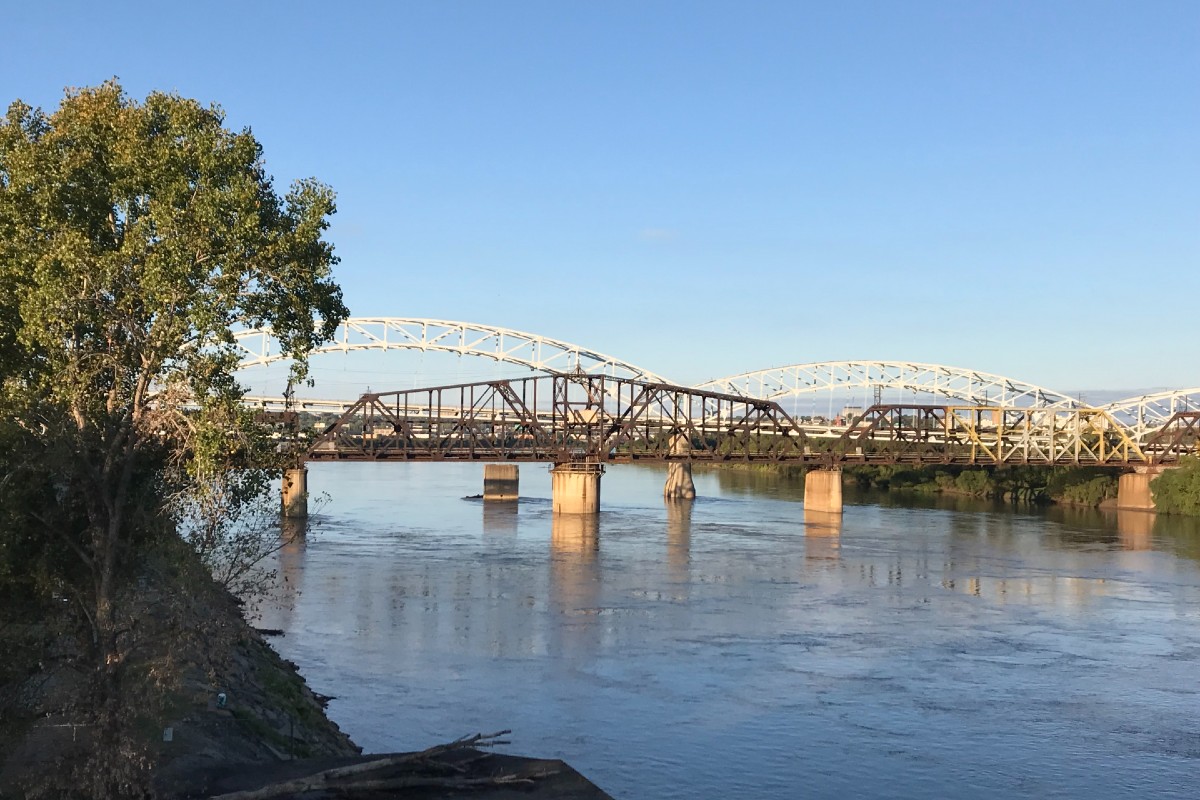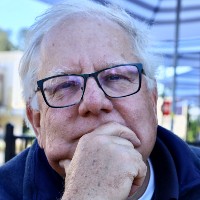(Editor’s Note: Janet and Ed Orr of Peachtree Corners are traveling out West. Here is a second installment about their trip.)–eeb
By Ed Orr
KANSAS CITY, Mo. | Leaving Indianapolis and heading on the new version of the National Pike (Interstate 70), we passed the fields of southern Illinois, crossing the busy Mississippi at St. Louis, past the Missouri river towns of Wellington and Napoleon, named for who you would suspect, with the unincorporated town of Waterloo between them! These towns because of their proximity to the river and are not close to the railroads or roads linking St. Louis and Kansas City; but they still survive, as does their larger cousin Liberty, also adjacent to the Missouri.
Continuing west to Kansas City, one finds a number of towns that claim they’re the gateway to the West including Independence, Mo. home of the “buck stops here” Harry S Truman’ St. Josephs, Mo. (the jumping off place for the short-lived Pony Express)’ and Westport, which is now a neighborhood of its bigger cousin, Kansas City and claims to be the start of the Santa Fe trail.
It is easy to see why Kansas City ended up where it did. It was birthed from the Missouri River and the steamboat. There’s a large flat rock jutting out into the Missouri that was convenient for the steamboats coming up stream from St. Louis to offload their cargo. This, coupled with an early municipal development project cutting a path through the 200 foot river bluffs allowed the wagons easy access from this off-loading point to Westport (now KC’s Main Street). From this, the business of servicing the vast needs of the country’s western expansion assured its growth.
Aside from being immortalized in the musical Oklahoma (“Going to Kansas City”) for burlesque and grain elevators, the city has a number of unusual facets: a great number of fountains (perhaps as a result of its abundant water source; it’s the headquarters of two large national banks each controlled by different members of the same family; impressive art museums; a second Federal Reserve District Bank (Missouri is the only state to serve as headquarters for the two Federal Reserve District Banks; a rejuvenated downtown, and a new transit system. During World War II, it built B-25 Mitchell bombers, among others. (It is now a General Motors assembly plant).
Kansas City has a series of good restaurants ranging from the Milwaukee Deli, The Homesteader Café, and L’ Affare, a modern German restaurant, a personal favorite.
The city also has a significant history from the Civil War arising from the Missouri compromise. Of note is the Lawrence Massacre in Kansas, where a number of Confederate guerillas attacked the town of Lawrence, killing men and boys. Not as well known is that this was in retribution for the deaths of a number of the women of the Confederates’ families that had been imprisoned as hostages in Kansas City by federal forces in a mysterious hotel fire. In any event, and perhaps most amazing of all, is that these Confederate guerillas were later pardoned and rejoined society.
From Kansas City, we headed south, past Fort Scott that was one of a series of forts built to enforce the resettlement of Indians to the western territories; past Wichita, which is now a major aircraft manufacturing center; on to the lower gas prices of Oklahoma; and on to catch up with an old friend and mentor in Fort Worth Texas.
- Have a comment? Send to: elliott@brack.net











Follow Us